Spyros Raptis
Investigating Disentanglement in a Phoneme-level Speech Codec for Prosody Modeling
Sep 13, 2024



Abstract:Most of the prevalent approaches in speech prosody modeling rely on learning global style representations in a continuous latent space which encode and transfer the attributes of reference speech. However, recent work on neural codecs which are based on Residual Vector Quantization (RVQ) already shows great potential offering distinct advantages. We investigate the prosody modeling capabilities of the discrete space of such an RVQ-VAE model, modifying it to operate on the phoneme-level. We condition both the encoder and decoder of the model on linguistic representations and apply a global speaker embedding in order to factor out both phonetic and speaker information. We conduct an extensive set of investigations based on subjective experiments and objective measures to show that the phoneme-level discrete latent representations obtained this way achieves a high degree of disentanglement, capturing fine-grained prosodic information that is robust and transferable. The latent space turns out to have interpretable structure with its principal components corresponding to pitch and energy.
Improved Text Emotion Prediction Using Combined Valence and Arousal Ordinal Classification
Apr 02, 2024
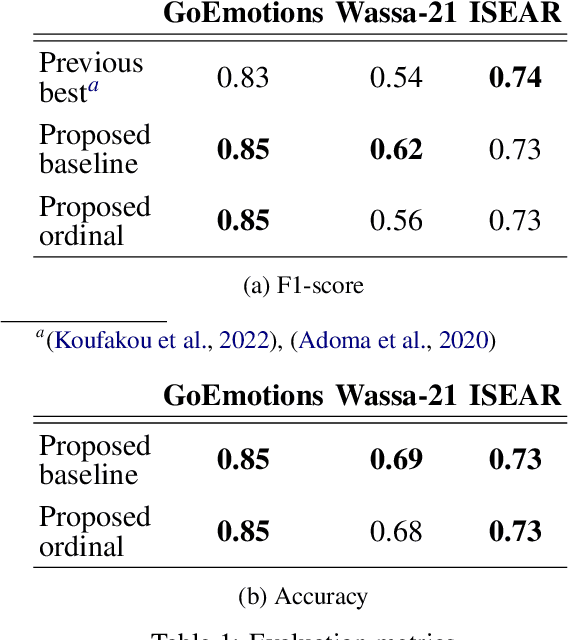
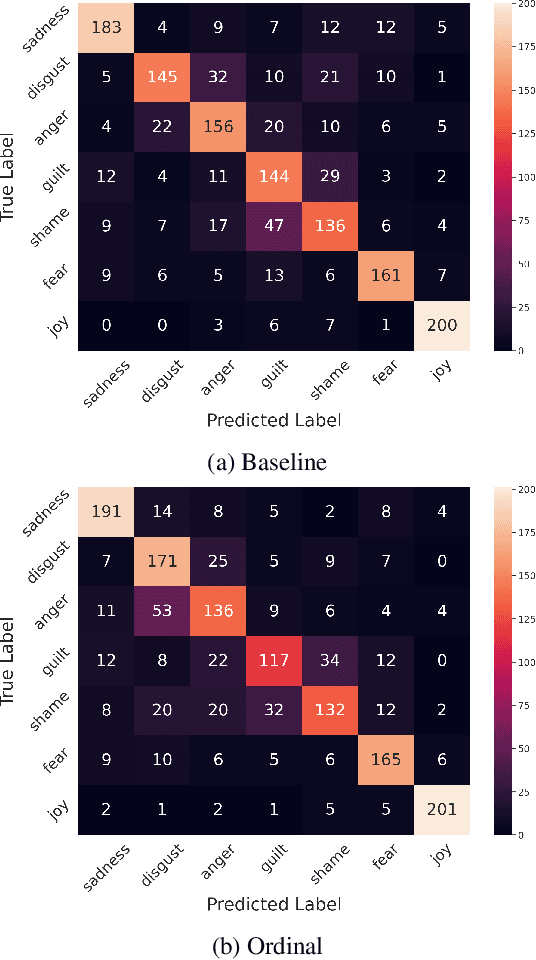
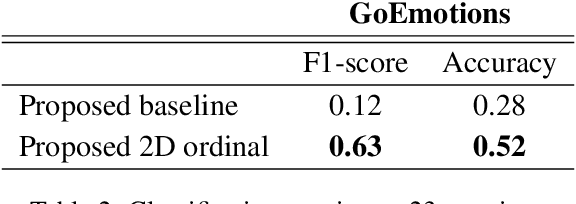
Abstract:Emotion detection in textual data has received growing interest in recent years, as it is pivotal for developing empathetic human-computer interaction systems. This paper introduces a method for categorizing emotions from text, which acknowledges and differentiates between the diversified similarities and distinctions of various emotions. Initially, we establish a baseline by training a transformer-based model for standard emotion classification, achieving state-of-the-art performance. We argue that not all misclassifications are of the same importance, as there are perceptual similarities among emotional classes. We thus redefine the emotion labeling problem by shifting it from a traditional classification model to an ordinal classification one, where discrete emotions are arranged in a sequential order according to their valence levels. Finally, we propose a method that performs ordinal classification in the two-dimensional emotion space, considering both valence and arousal scales. The results show that our approach not only preserves high accuracy in emotion prediction but also significantly reduces the magnitude of errors in cases of misclassification.
Predicting phoneme-level prosody latents using AR and flow-based Prior Networks for expressive speech synthesis
Nov 02, 2022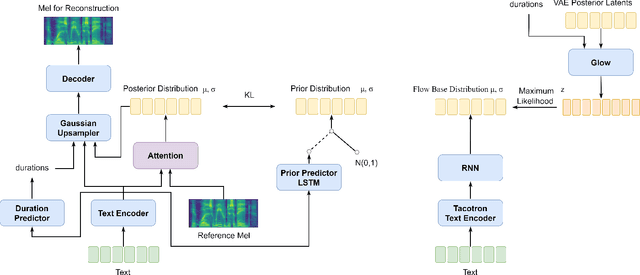
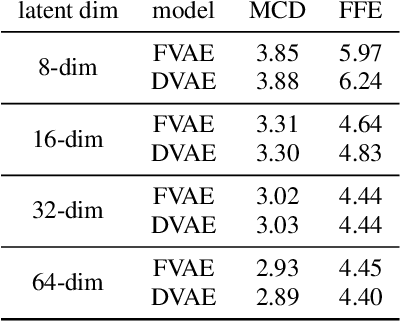
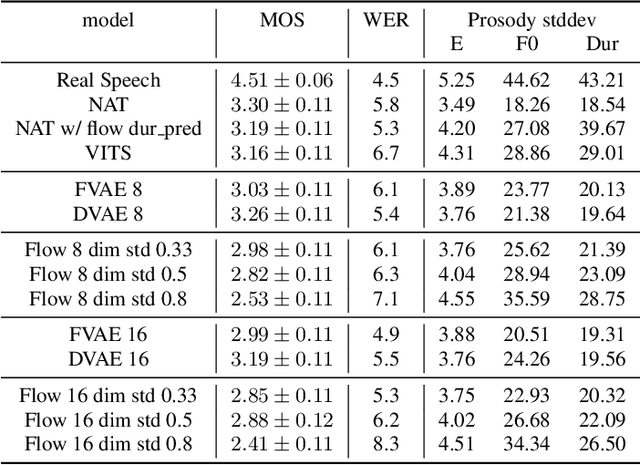
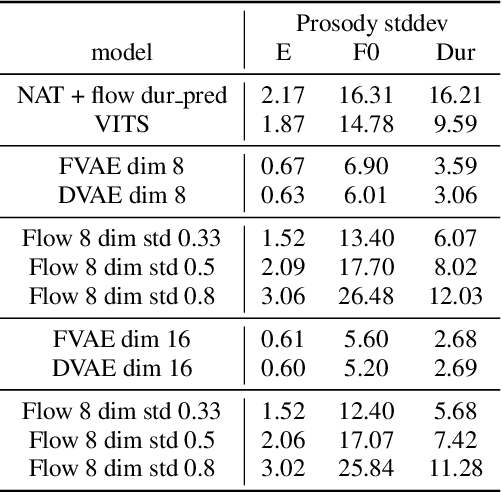
Abstract:A large part of the expressive speech synthesis literature focuses on learning prosodic representations of the speech signal which are then modeled by a prior distribution during inference. In this paper, we compare different prior architectures at the task of predicting phoneme level prosodic representations extracted with an unsupervised FVAE model. We use both subjective and objective metrics to show that normalizing flow based prior networks can result in more expressive speech at the cost of a slight drop in quality. Furthermore, we show that the synthesized speech has higher variability, for a given text, due to the nature of normalizing flows. We also propose a Dynamical VAE model, that can generate higher quality speech although with decreased expressiveness and variability compared to the flow based models.
Generating Gender-Ambiguous Text-to-Speech Voices
Nov 01, 2022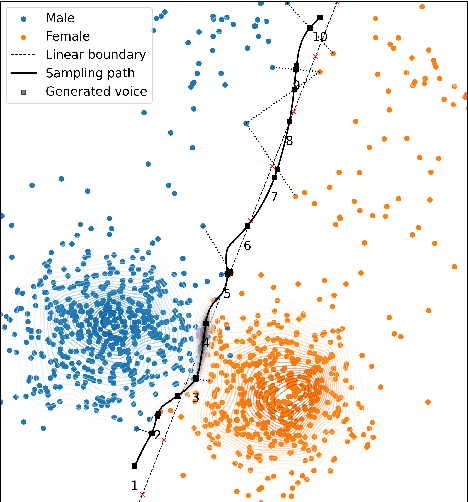


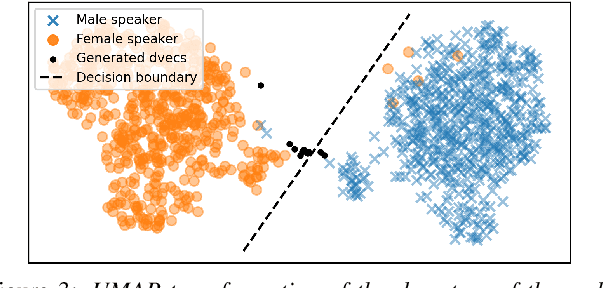
Abstract:The gender of a voice assistant or any voice user interface is a central element of its perceived identity. While a female voice is a common choice, there is an increasing interest in alternative approaches where the gender is ambiguous rather than clearly identifying as female or male. This work addresses the task of generating gender-ambiguous text-to-speech (TTS) voices that do not correspond to any existing person. This is accomplished by sampling from a latent speaker embeddings' space that was formed while training a multilingual, multi-speaker TTS system on data from multiple male and female speakers. Various options are investigated regarding the sampling process. In our experiments, the effects of different sampling choices on the gender ambiguity and the naturalness of the resulting voices are evaluated. The proposed method is shown able to efficiently generate novel speakers that are superior to a baseline averaged speaker embedding. To our knowledge, this is the first systematic approach that can reliably generate a range of gender-ambiguous voices to meet diverse user requirements.
Learning utterance-level representations through token-level acoustic latents prediction for Expressive Speech Synthesis
Nov 01, 2022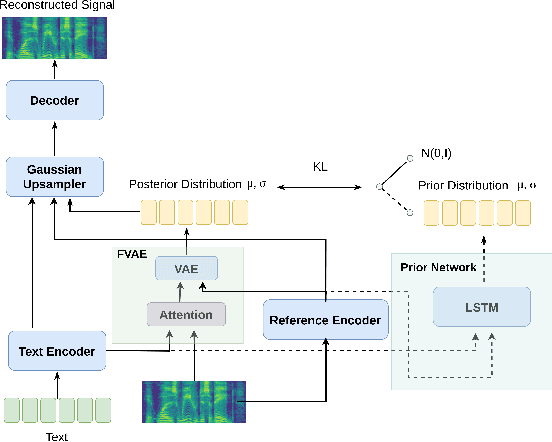
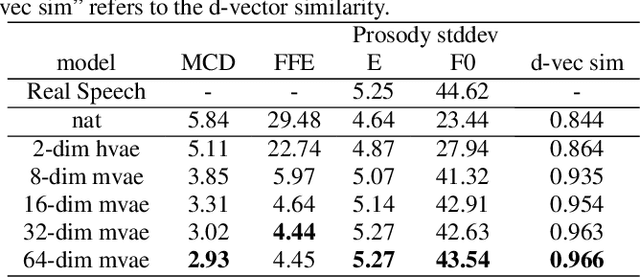
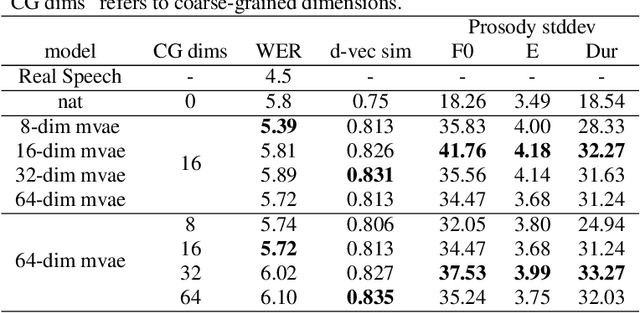

Abstract:This paper proposes an Expressive Speech Synthesis model that utilizes token-level latent prosodic variables in order to capture and control utterance-level attributes, such as character acting voice and speaking style. Current works aim to explicitly factorize such fine-grained and utterance-level speech attributes into different representations extracted by modules that operate in the corresponding level. We show that the fine-grained latent space also captures coarse-grained information, which is more evident as the dimension of latent space increases in order to capture diverse prosodic representations. Therefore, a trade-off arises between the diversity of the token-level and utterance-level representations and their disentanglement. We alleviate this issue by first capturing rich speech attributes into a token-level latent space and then, separately train a prior network that given the input text, learns utterance-level representations in order to predict the phoneme-level, posterior latents extracted during the previous step. Both qualitative and quantitative evaluations are used to demonstrate the effectiveness of the proposed approach. Audio samples are available in our demo page.
Cross-lingual Text-To-Speech with Flow-based Voice Conversion for Improved Pronunciation
Oct 31, 2022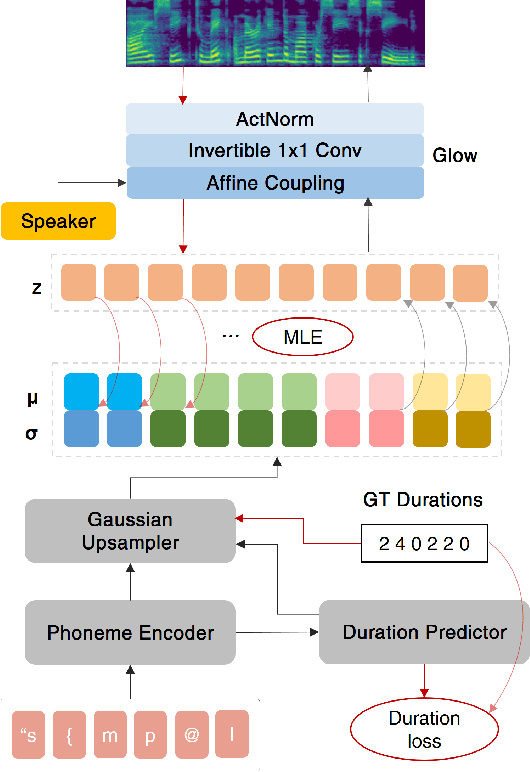
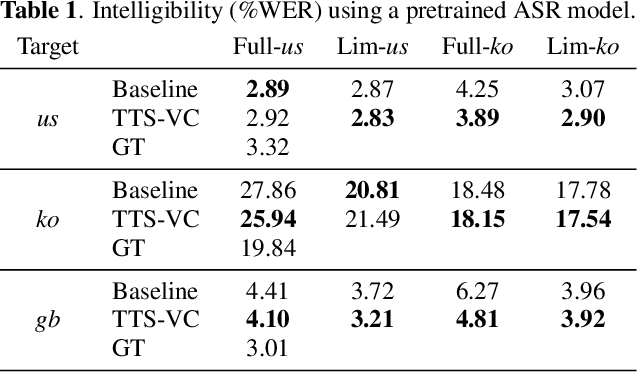

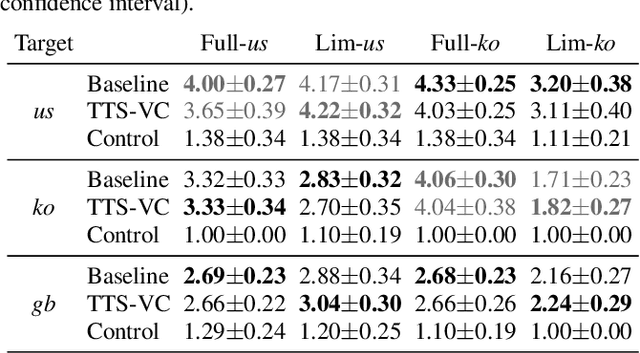
Abstract:This paper presents a method for end-to-end cross-lingual text-to-speech (TTS) which aims to preserve the target language's pronunciation regardless of the original speaker's language. The model used is based on a non-attentive Tacotron architecture, where the decoder has been replaced with a normalizing flow network conditioned on the speaker identity, allowing both TTS and voice conversion (VC) to be performed by the same model due to the inherent linguistic content and speaker identity disentanglement. When used in a cross-lingual setting, acoustic features are initially produced with a native speaker of the target language and then voice conversion is applied by the same model in order to convert these features to the target speaker's voice. We verify through objective and subjective evaluations that our method can have benefits compared to baseline cross-lingual synthesis. By including speakers averaging 7.5 minutes of speech, we also present positive results on low-resource scenarios.
Fine-grained Noise Control for Multispeaker Speech Synthesis
Apr 11, 2022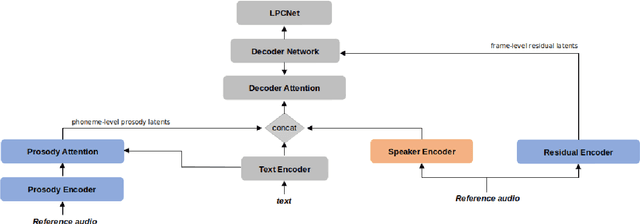
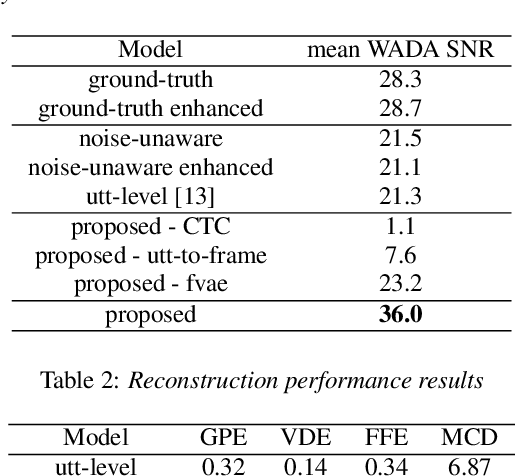
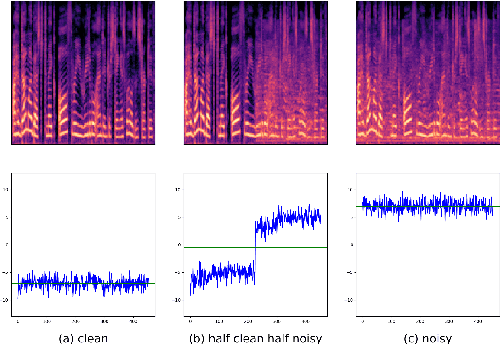
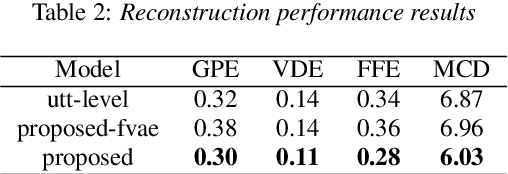
Abstract:A text-to-speech (TTS) model typically factorizes speech attributes such as content, speaker and prosody into disentangled representations.Recent works aim to additionally model the acoustic conditions explicitly, in order to disentangle the primary speech factors, i.e. linguistic content, prosody and timbre from any residual factors, such as recording conditions and background noise.This paper proposes unsupervised, interpretable and fine-grained noise and prosody modeling. We incorporate adversarial training, representation bottleneck and utterance-to-frame modeling in order to learn frame-level noise representations. To the same end, we perform fine-grained prosody modeling via a Fully Hierarchical Variational AutoEncoder (FVAE) which additionally results in more expressive speech synthesis.
Self supervised learning for robust voice cloning
Apr 07, 2022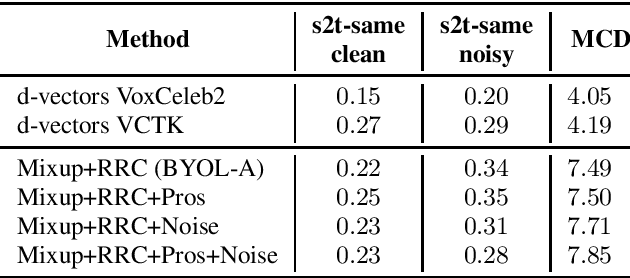
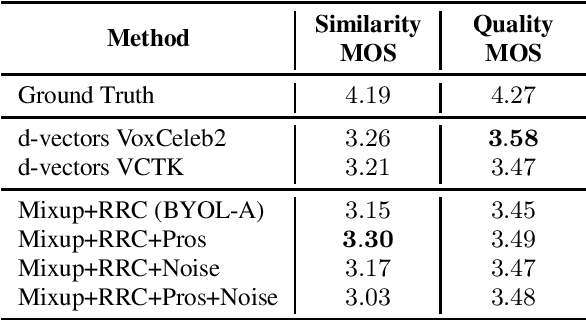
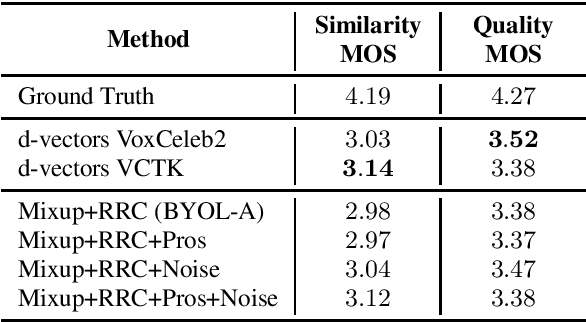
Abstract:Voice cloning is a difficult task which requires robust and informative features incorporated in a high quality TTS system in order to effectively copy an unseen speaker's voice. In our work, we utilize features learned in a self-supervised framework via the Bootstrap Your Own Latent (BYOL) method, which is shown to produce high quality speech representations when specific audio augmentations are applied to the vanilla algorithm. We further extend the augmentations in the training procedure to aid the resulting features to capture the speaker identity and to make them robust to noise and acoustic conditions. The learned features are used as pre-trained utterance-level embeddings and as inputs to a Non-Attentive Tacotron based architecture, aiming to achieve multispeaker speech synthesis without utilizing additional speaker features. This method enables us to train our model in an unlabeled multispeaker dataset as well as use unseen speaker embeddings to copy a speaker's voice. Subjective and objective evaluations are used to validate the proposed model, as well as the robustness to the acoustic conditions of the target utterance.
Word-Level Style Control for Expressive, Non-attentive Speech Synthesis
Nov 19, 2021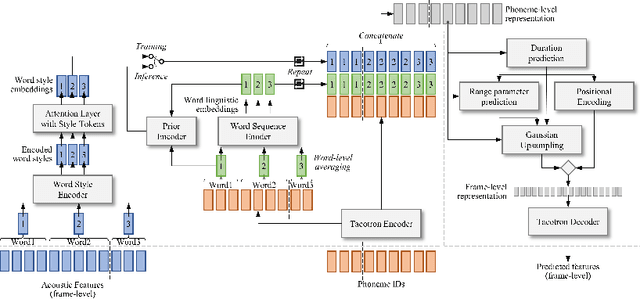

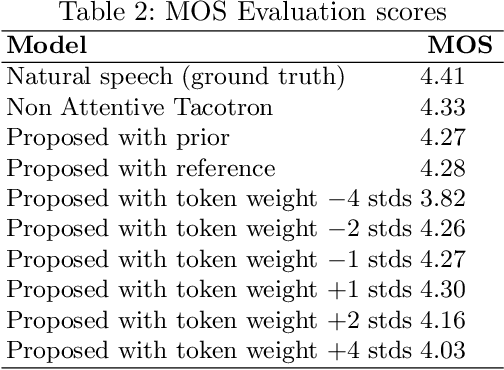

Abstract:This paper presents an expressive speech synthesis architecture for modeling and controlling the speaking style at a word level. It attempts to learn word-level stylistic and prosodic representations of the speech data, with the aid of two encoders. The first one models style by finding a combination of style tokens for each word given the acoustic features, and the second outputs a word-level sequence conditioned only on the phonetic information in order to disentangle it from the style information. The two encoder outputs are aligned and concatenated with the phoneme encoder outputs and then decoded with a Non-Attentive Tacotron model. An extra prior encoder is used to predict the style tokens autoregressively, in order for the model to be able to run without a reference utterance. We find that the resulting model gives both word-level and global control over the style, as well as prosody transfer capabilities.
High Quality Streaming Speech Synthesis with Low, Sentence-Length-Independent Latency
Nov 17, 2021
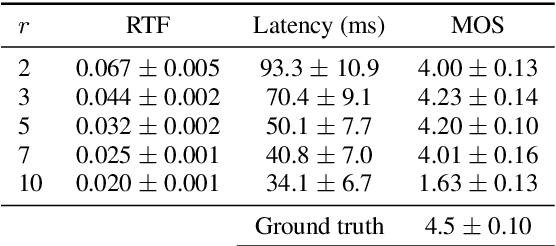
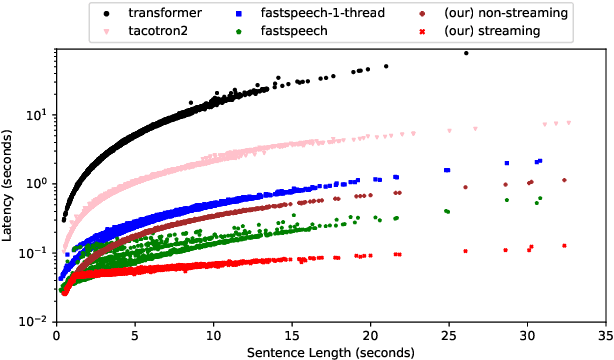
Abstract:This paper presents an end-to-end text-to-speech system with low latency on a CPU, suitable for real-time applications. The system is composed of an autoregressive attention-based sequence-to-sequence acoustic model and the LPCNet vocoder for waveform generation. An acoustic model architecture that adopts modules from both the Tacotron 1 and 2 models is proposed, while stability is ensured by using a recently proposed purely location-based attention mechanism, suitable for arbitrary sentence length generation. During inference, the decoder is unrolled and acoustic feature generation is performed in a streaming manner, allowing for a nearly constant latency which is independent from the sentence length. Experimental results show that the acoustic model can produce feature sequences with minimal latency about 31 times faster than real-time on a computer CPU and 6.5 times on a mobile CPU, enabling it to meet the conditions required for real-time applications on both devices. The full end-to-end system can generate almost natural quality speech, which is verified by listening tests.
 Add to Chrome
Add to Chrome Add to Firefox
Add to Firefox Add to Edge
Add to Edge